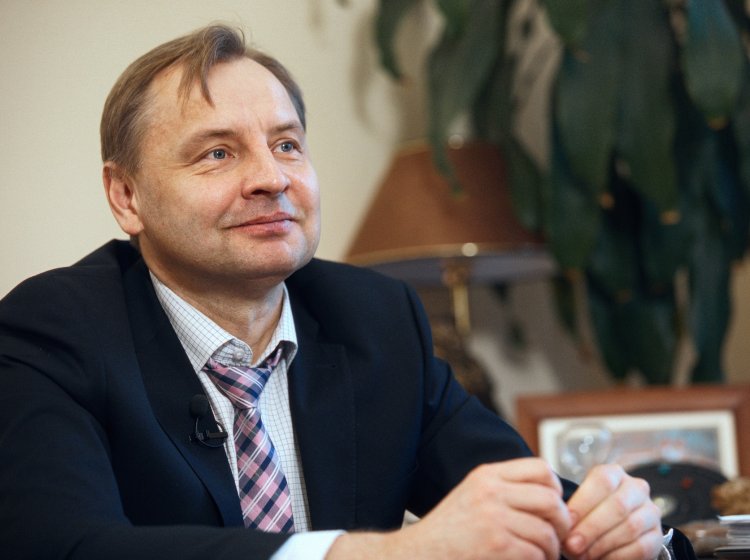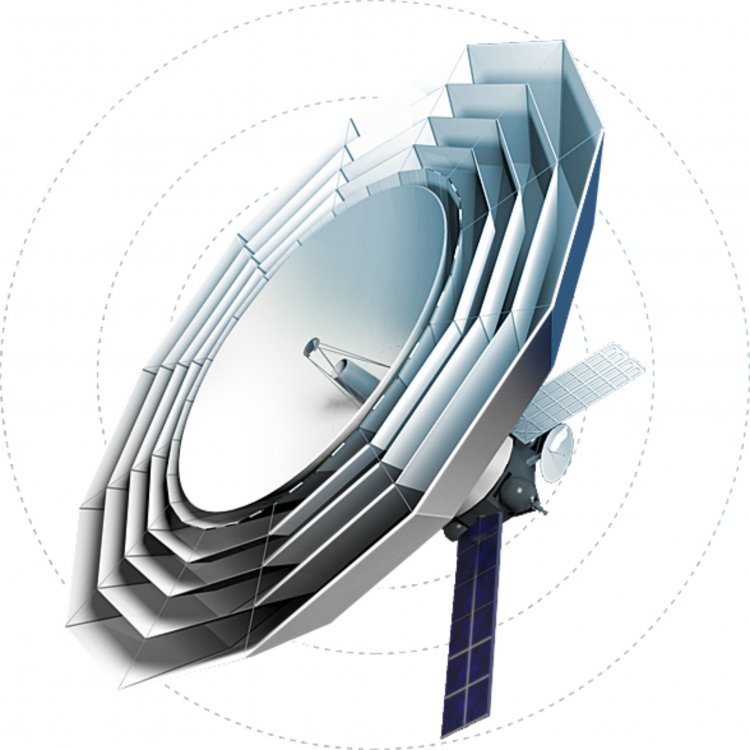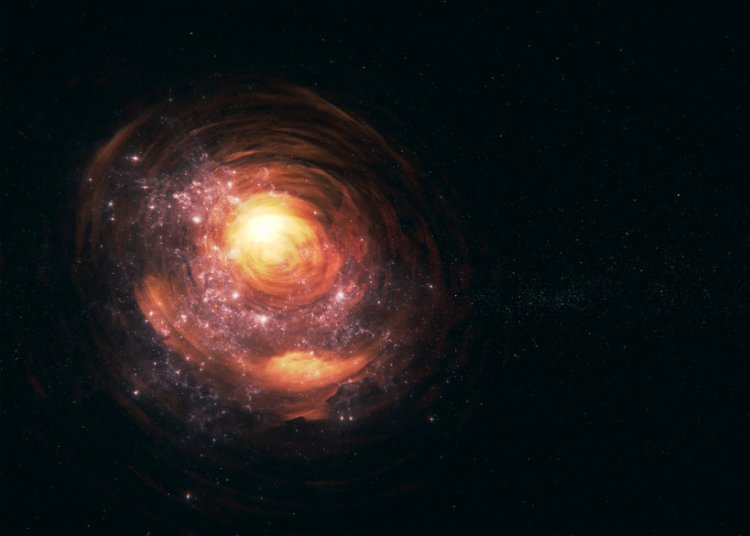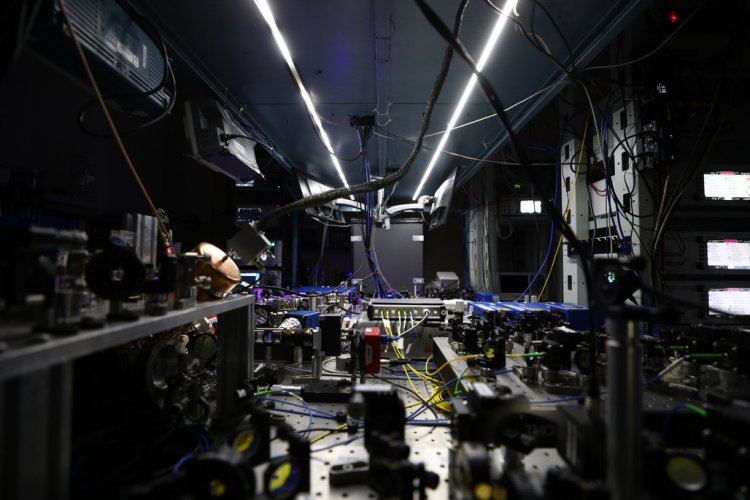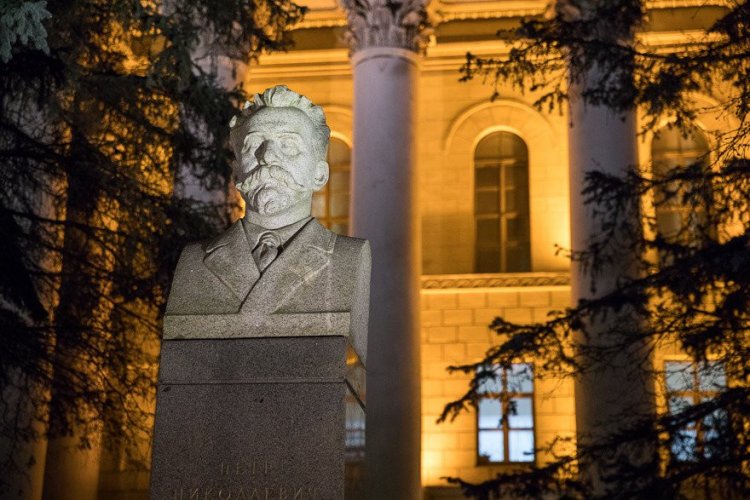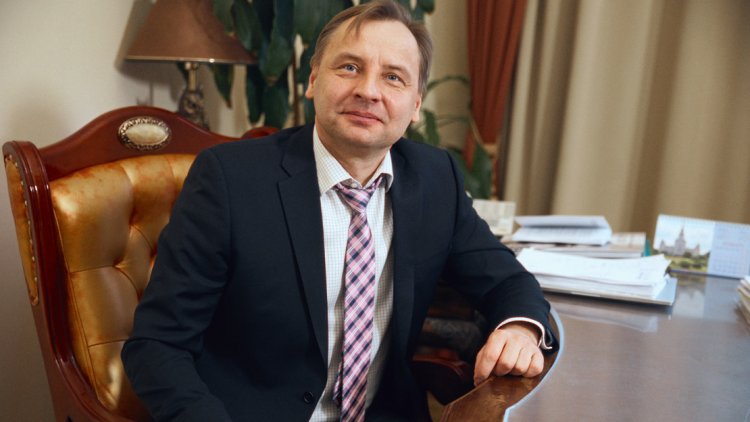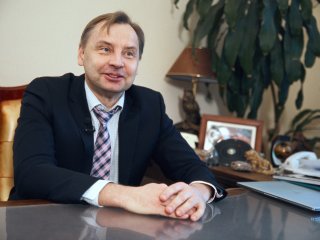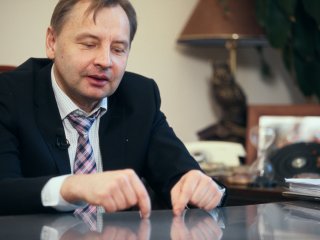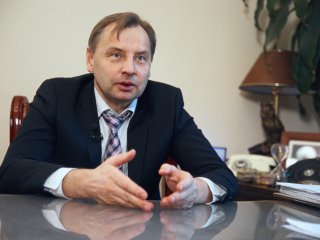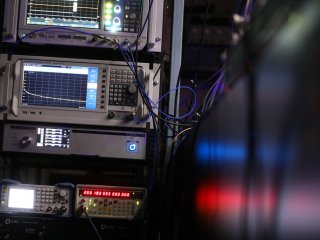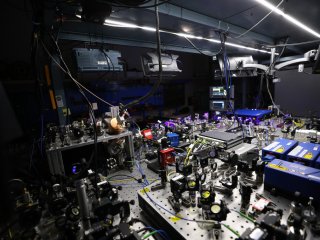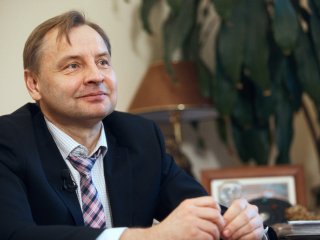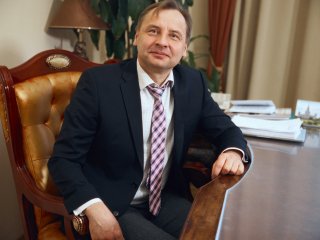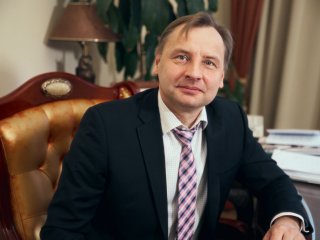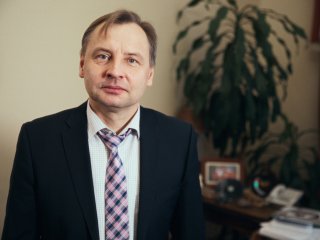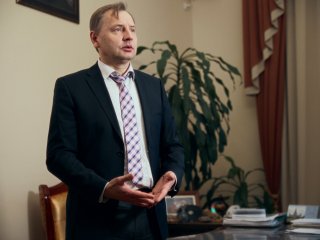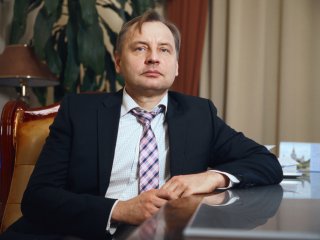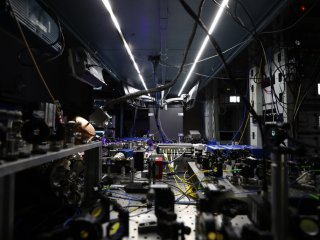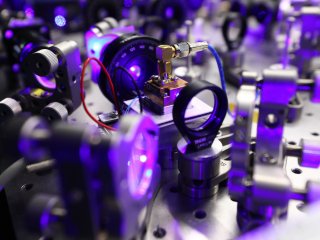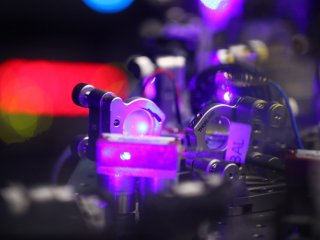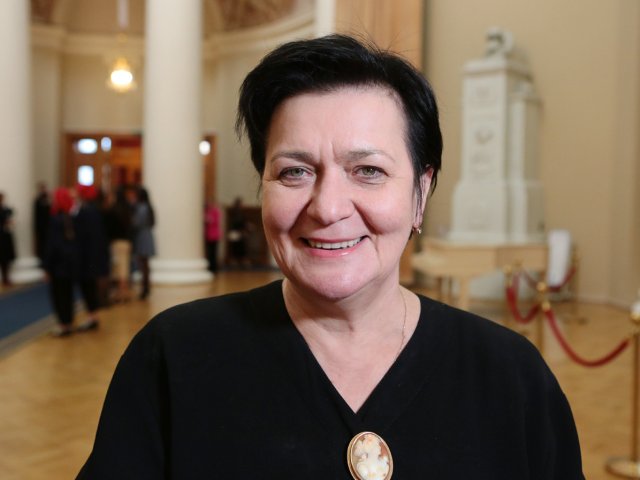This month Nikolay Nikolaevich Kolachevsky ─ Corresponding Member of the Russian Academy of Sciences, Director of the Lebedev Physical Institute of the Russian Academy of Sciences (LPI RAS), Doctor of Physics and Mathematics, celebrated his 50th birthday. In his interview to Scientific Russia, the scientist spoke about the mysteries of quasars, the study of the early Universe and deep space exploration, and, of course, about LPI RAS projects and his own path to science.
─ You were born into a family of physicists. Did you decide to follow the footsteps of your parents when you were a child?
─ Yes, I was interested in physics since childhood, but in fact, I liked chemistry even more and studied it on my own until the tenth grade. As for physics, I studied at the famous Correspondence Physics and Engineering School of MIPT, but to me, it was kind of routine, and chemistry attracted me much more, in the end, however, I did not take the path of chemistry.
─ Why?
─ I entered the Department of General and Applied Physics of MIPT, and chemistry was not in favor there at that time. Somehow, I failed to develop some necessary skills and physics began to fascinate me more, actually.
─ What do you think is the major difference between physics and chemistry?
─ Based on my experience, on how I have felt it myself, chemistry ─ is a less rigorous science, it's more intuitive: you have to feel well what will work and what will not. The probability of getting the expected result is lower there. A lot of chemical formulas that you imagine don't exist at all. You may want to do something with them, but you can't. In that sense, physics is a more rigorous science.
─ And not as abstract as mathematics.
─ Yes. Physics is an experimental science and even though we can compare physics and chemistry because they are both experimental, mathematics hardly fits in this line. Real mathematics is very abstract indeed, and you should not expect to be able to check any results, conclusions, or postulates experimentally.
─ Meanwhile, any theoretical physics, sooner or later, must be confirmed by an experiment, right?
─ Let's say that it is highly desirable. Of course, theoretical physics goes more and more into the area of field theory today, into the area of such energy values that are unattainable in the existing Universe. There are attempts to build a theory of great unification, to learn more about the early stages of the Universe, because now, as we know, we live in a cold Universe. But in general, such studies, where the role of experiment is not so essential, do not comprise a major part of physics and there are not so many people who are engaged in it.
─ Speaking of the early Universe, the outstanding physicist Andrei Linde, who pioneered the development of the inflationary model of the Universe, worked at LPI RAS during the Soviet times. Is this research ongoing at the Institute?
─ Yes. There is a group of astrophysicists in I. E. Tamm Theory Department at LPI RAS, who are working on this theory of the Hot Big Bang being preceded by an inflationary stage. This inflationary direction of study also seems a bit abstract, but nevertheless, these studies can be referenced to observational data: for example, there is microwave relic radiation ─ echoes of the past events that we observe in the Universe today.
In general, there are a lot of interesting observations in the world of astrophysics now. I would call the last decade “a triumph of astrophysics” ─ we have witnessed the discovery of gravitational waves, exoplanets, we study the black holes, etc. Scientists have not yet come right up to the black holes, of course, but they have already come pretty close and if these objects used to be only an abstraction and existed on paper alone, today we observe the black holes in the millimeter wavelength range directly. The theory of inflation you ask about is also one of those theories that are difficult to confirm, but very interesting to study.
THE INFLATIONARY MODEL OF THE UNIVERSE is a cosmological model suggesting that at the earliest stage of the Universe's evolution, when it was from 10–43 to 10–37 seconds old, the Universe underwent tremendous expansion, which resulted in the exponential growth of all spatial scales. In cosmology, the term “inflation” refers to the rapid growth of scales, in which the speed of growth is proportional to the value of the scale itself. This term describes the nature of the early Universe expansion very accurately.
Information note source: The Big Russian Encyclopedia
Image source: NASA / WMAP Science Team
─ Let's not forget about the wormholes; in particular, one of the largest projects of LPI RAS ─ Millimetron ─ is aimed at finding them. At the same time there are scientists who do not believe in the existence of these amazing objects. What do you think? Do they exist?
─ I cannot say whether they exist or not for sure, of course. So, let's go back to the history of black holes. Up to 2010 black holes were still considered to be some kind of abstraction and there was no experimental evidence for their existence. However, in recent years we witness the real triumph of this area; we can recall the famous photo of a black hole at least. Perhaps the story will be the same for the wormholes. Basically, the theory does not exclude the existence of wormholes, and maybe, if observational methods, including those provided by the Millimetron space telescope, allow us, we will learn more about these yet hypothetical objects.
─ What is the uniqueness of Millimetron?
Millimetron space observatory (Spektr-M) is a project of the Astro Space Center at LPI RAS. It is a 10-meter space telescope designed to study various objects in the Universe in the millimeter and infrared wavelength ranges between 0.07 and 10 mm. The observatory has two modes of operation: single antenna mode and space-Earth interferometer. The first mode will have the best sensitivity for studying the faintest sources of the Universe. The second mode will provide high angular resolution of up to 10-8 ─ 10-9 arc angular seconds, allowing one to study the structure of the universe's most compact objects ─ supermassive black holes.
Information note and photo source: Millimetron Space Observatory website
─ If Millimetron is launched in 2030, as it is planned, it will be the unique mirror in space, cooled to the temperature of liquid helium (below -268 degrees Celsius) ─ in other words, it is a very sensitive instrument. In addition, the telescope's range is also unique: millimeter and infrared wavelength range between 0.07 and 10 mm. This range will allow us to look through the thickness of dust at objects with a large redshift. Methods of Very Long Baseline Interferometry, VLBI, will make it possible to achieve a very high angular resolution, i.e., detailing of objects, just as it has already been achieved in the RadioAstron project, the ideological inspirer of which was Academician Nikolai Semyonovich Kardashev. I have only mentioned the main distinguishing features; in fact, there are many more. We expect to achieve very interesting results from Millimetron in the study of the deep space, of the very edges of the Universe, and, of course, of the neighboring galaxies.
─ What other mysteries of the Universe, besides wormholes, will the Millimetron investigate?
─ These will include detailing of the black holes, galactic jets, and quasars ─ astronomical objects that are very far away from us and have a huge redshift (note: the spectrum of an object shifts to the red part as it moves away from us; thus, the higher the redshift of an object is, the farther it is from us).
These quasars, or supermassive black holes in the centers of galaxies that have a mass of 109 solar masses or more, i.e., billions of solar masses, are extremely interesting. Their mystery is that, in relation to the time of the Big Bang, these objects were formed too early. Thus, the cosmological models assume that it takes long (about a billion years from the Big Bang) for such a large mass to be formed in a galaxy and for some kind of collapse to occur ─ in other words, it is a very long story in terms of time. However, recent observations show that the youngest quasars are ten to one hundred thousand years old, which is a surprisingly short period of time. And such monsters with a gigantic mass of billions of solar masses that I mentioned above are 700 million years old, which also makes them very young! It is not very clear how they were formed. In addition to the problem with the accretion process duration, there is also a problem of creating the necessary “seed” mass, which must be about 103 ─ 105 solar masses.
─ Did they appear somehow spontaneously or too abruptly?
─ Right now we can't say anything for sure. In general, the question of star formation is quite complicated and not fully understood. We do not know for sure how the first stars were formed and how they are being formed now, what role magnetic fields, jets, etc. play in this process.
Moreover, studies show that black holes sometimes stimulate the birth of stars: it is paradoxical, because it would seem that they should tear them apart or absorb them, but we see the processes that, on the contrary, lead to star formation. So, X-rays produced by the accretion of matter on a black hole stimulate the formation of molecular hydrogen, which, in its turn, stimulates the formation of stars.
Another area of the Millimetron activity, which is of a particular interest to me, is registering water in the Universe, and water, as we know, means life. We are aimed at searching for water vapor, water molecules, organic compounds in deep space. Millimetron is an ultra-sensitive instrument that is best fit for such tasks.
Quasar, or quasi-stellar radio source is one of the types of active galactic nuclei. Quasars are also some of the brightest objects in the entire Universe, and, in fact, they are nothing but supermassive black holes in the centers of galaxies, interacting with the surrounding gas. In terms of their brightness, quasars can even outshine entire galaxies. The first quasar was discovered in 1963.
Illustration: pike28 / 123RF
─ Besides the Millimetron, there is another remarkable project at LPI RAS ─ the unique Russian ion quantum computer. As far as I know, this is the most important area of your scientific interests, isn't it?
─ Yes, that's right. Initially, I was involved in X-ray optics, and my candidate's dissertation was devoted to the X-ray optics, namely, the physics of the Sun. Then I shifted my interests to nonlinear, laser physics. Then I worked on precision optical measurements in Germany as part of the Humboldt Research Fellowship. Then, my colleagues and I spent quite a long time here at LPI RAS dealing with (and we continue to deal with) optical clocks, which have a large and interesting range of applications. They are used for navigation tasks, they are used for dark matter registration, and many other things. Moreover, the optic clock technology can also be used to create the prototypes of quantum computers. It turns out that the methods required for creating the prototypes of ion quantum computers are very similar to the methods required for optical clocks: they include lasers, cooled particles, quantum state control, and so on. We now conduct this research in our laboratory of complex quantum systems within the framework of the National Quantum Laboratory in partnership with the Russian Quantum Center and Rosatom.
─ Is your quantum computer already working?
─ Yes. Within the last two years we actually managed to build a four-qubit quantum computer that is now operating at LPI RAS. The computer is connected to a cloud platform and we can use it to conduct experiments. Our colleagues from Moscow State University and the Russian Quantum Center try to interact with it remotely. It is clear that its characteristics are inferior to the best Western models, but we have already made the first important step in this direction.
─ What tasks can it be used for?
─ There is a huge number of directions. These can be some tasks related to encryption or decryption, i.e., cryptography, as well as the search for phase transitions, the search for potential minima in energetically complex quantum systems, for superconductivity problems, for example. Programmable quantum computers that we are trying to develop here will be useful in optimization tasks, i.e., where it is necessary to search for complex correlations, complex relations within the system. It is closer to logistics and engineering design. So far, we are at the very beginning of our journey in this direction.
Ion quantum computer at LPI RAS. Photo: Nikolay Malakhin / Scientific Russia
─ I think you could call LPI RAS the landmark of our physics: seven Nobel laureates, outstanding discoveries, and inventions that are recognized around the world. Does the Institute still maintain its position in the international scientific arena?
─ That is a complicated question, because our scientific face is determined more by specific people working in a particular period of time, not by our name and status. The institute name plays a role in some sense, of course, but the key point is the scientists themselves. Today, we publish our research in all areas of modern physics. Judging from this perspective, we look pretty good! It is clear that the global competition is very strong, especially with the Chinese science, which has made tremendous advances in physics in recent years. There was no China in science as such some 20 years ago, but now it has a very strong position on the world stage. In recent years, China has invested tremendous human and financial resources in the development of its science, and the result has not been long in coming.
Back to your question, LPI RAS is still recognized around the world; our task, however, is not to rest on our laurels, but to develop further. By the way, it does not happen so that, for example, you submit an article to a prestigious scientific journal, and the editor, seeing that it is from LPI RAS, immediately gives it the green light. On the contrary, our prestige is recognized all over the world, so we are subject to more rigorous requirements.
The Lebedev Physical Institute of the Russian Academy of Sciences. The main research center of the country in the field of physics, the “ancestral home” of seven Nobel laureates: Nikolay Basov, Vitaly Ginzburg, Alexander Prokhorov, Andrei Sakharov, Igor Tamm, Ilya Frank, and Pavel Cherenkov. The theory of thermonuclear reactions, an outstanding work of Sakharov-Tamm, the Vavilov-Cherenkov effect, and the Ginzburg-Landau theory for superconductivity were born at LPI RAS. The Institute became the first place to discover lasers; Mandelstam-Brillouin scattering, and the Veksler-McMillan autophasing principle, the Franz-Keldysh effect, the Hartree-Fock method, and many other outstanding fundamental discoveries were made at the Institute.
Photo: Nikolay Mokhnachov / Scientific Russia
Speaking of the international contacts. Our Institute has its own special pride, which is underestimated, I think ─ it is our state branch in Kazakhstan: LPI’s Tien Shan High Mountain Research Station. It is located near Alma-Ata, about 50 kilometers away from the city. Among other things, the scientists are engaged in the study of thunderstorms, continuing the work of Academician A. V. Gurevich. Besides thunderstorms, they also study cosmic rays, their influence on the formation of lightning and on the precipitation; they also search for broad atmospheric downpours. There are 40 people working there, including several Doctors of Science. By today's standards, this is a truly unique scientific station.
In general, Russia participates in a variety of collaborations: the European X-ray free-electron laser, ITER, CERN, and other projects. At the moment, Europe is considering the entrance of Russian scientists into the European Southern Observatory (ESO). But these are all collaborative stories, and having our own branches is another story: it is very fragile, and it needs to be maintained and developed.
It seems to me that we have almost forgotten how to create scientific organizations ─ the thing that the Soviet authorities, by the way, could do quite well. If you look at the number of scientific organizations created in recent years, you will be able to count them on your fingers: Skolkovo, the Russian Quantum Center, Innopolis, and several other projects, including the 5-100 program for the development of universities, this program, however, is not new, but the well-forgotten old one. These skills have actually been lost. For example, a scientific center for physics and mathematics, the All-Russian Scientific Research Institute of Experimental Physics based in Sarov, is currently being created by the order of the President. But how do we breathe life into this center? It is a very difficult task to attract people, students, to maintain the infrastructure around it, and to create a certain environment for communication and experience exchange.
Nikolay Kolachevsky was the first to perform deep laser cooling of the rare earth thulium atom to the temperature of 10 μK (for solving the task of creating high-precision optical clocks), as well as secondary cooling and trapping of thulium in magnetic and optical traps. He implemented new principles of laser frequency stabilization, which make it possible to obtain compact tunable laser emission sources with a spectral line width of less than 1 Hz.
Source: LPI RAS website. Photo: Nikolay Malakhin / Scientific Russia
─ Nikolay Nikolaevich, this month you have celebrated your 50th birthday. We have already talked about the Institute. What about your personal goals for the near future? Tell us about them.
─ My personal goals of late have been focused on my family, because I have two little kids: my daughter is three years old and my son is one and a half months old. I think, in this regard, my goals are familiar and understandable to all parents. Although, of course, I dream that someday I will go back to traveling, to water tourism and free diving, to making handicrafts and playing music, which I enjoy as well. When I have the time and the right mood, I really like to play the piano; I hope that I will find the time and energy for this hobby.
I try to develop together with my children; by the way, I also refer my students to them. One of the greatest joys for me is the defense of dissertations, when my postgraduate students reach the level of candidate defenses, it is very rewarding. Of course, I would like to see these works grow into doctoral dissertations, although, at present, it is very difficult to achieve for some reason: people set high bars for themselves and are not always able to cope with them. Nevertheless, when my students achieve their scientific goals, it is always a great pleasure for me.
